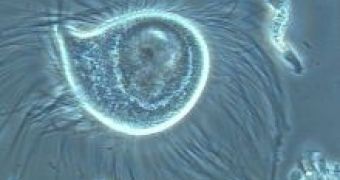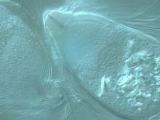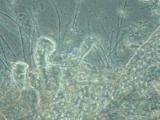It may be shocking, but over 90 percent of the cells in your body are not yours - they are various kinds of bacteria that live in symbiosis with your body. Only a small number of bacteria in our bodies are harmful; most of them get something from our bodies and deliver useful tricks in return - such as enzymes needed for digesting the food and which cannot be synthesized by our own bodies.
Now, for the first time, scientists have studied the genetics of the world inside our gut, or colon. They have found up to 100 trillion microbes, representing more than 1,000 species. They help us digest much of what we eat, including some vitamins, sugars, and fiber. This colon "microbiome", to sum of all these microbes, includes more than 60,000 genes - twice as many as found in the human genome. Because some of these microbial genes code for enzymes that humans need to digest food, scientists think they co-evolved with their human host, to mutual benefit.
"We're entirely dependent on this microbial population for our well-being," said lead author Steven Gill, a molecular biologist formerly at The Institute for Genomic Research (TIGR) and now at the State University of New York in Buffalo. "A shift within this population, often leading to the absence or presence of beneficial microbes, can trigger defects in metabolism and development of diseases such as inflammatory bowel disease."
Some of them are with us from birth, passed from the mother to the fetus during pregnancy, while others gradually colonize our bodies as we grow. Scientists are amazed by the huge density and diversity found in this bacterial ecosystem. By comparison to the outside world, Gill suspects the human gut is at least as complex as our soils or seas.
Studying human crap
As in studies of other animals, the scientists began by collecting "droppings". They collected fecal samples from two anonymous, healthy adults who'd gone without antibiotics or other medications for a year prior to the study. The researchers created DNA libraries based on the samples, generating a total of 65,059 and 74,462 sequence reads, respectively, from the two subjects. They found evidence for several hundred bacterial phylotypes, most falling into two divisions of bacteria known as Firmicutes and Actinobacteria. In addition, a microbial organism known as a methanogenic archaeon, Methanobrevibacter smithii, was prominent.
What do these bacteria do?
The study shows that resident microbes in the colon actively synthesize vitamins and break down plant sugars, which humans could not otherwise digest, because we lack the necessary enzymes. Cellobiose, for instance, is a key component of plant cell walls similar to cellulose, and, thus, is found in most edible plants, such as apples and carrots and couldn't be digested without the help of these microbes.
In an upcoming study by Buck Samuel, a graduate student in Jeffrey Gordon's lab and a co-author in the current study, finds that one of the microbes, called M. smithii, whose genes were analyzed helps determine how much calories we absorb from the food we eat. In experiments on mice they found that mice having large concentrations of M. smithii in their guts are fatter than those that don't have the bacteria. This microbe eats up hydrogen waste products released by other microbes in our gut and converts it into methane gas, which is released in a process known as farting.
"This study is an important first step toward identifying microbial differences between healthy people and those with conditions ranging from Crohn's Disease to cancer," says co-author Karen Nelson of TIGR, who has previously studied the guts of termites and other animals. "We might compare different individuals, with different diets, for instance."
This work could become the opening salvo of a Human Microbiome Project that defines the microbial side of ourselves, suggests co-author Jeffrey Gordon, a microbiologist at Washington University in St. Louis. Gordon envisions such a project pursuing fundamental questions.
How different are our microbiomes? Should differences in our microbiomes be viewed, along with our immune and nervous systems, as features of our biology that are affected by our individual environmental exposures? How is the human microbiome evolving as a function of our changing diets, lifestyle, and biosphere? Finally, how might we alter these microbial communities for better health in a person or population?

 14 DAY TRIAL //
14 DAY TRIAL // 

